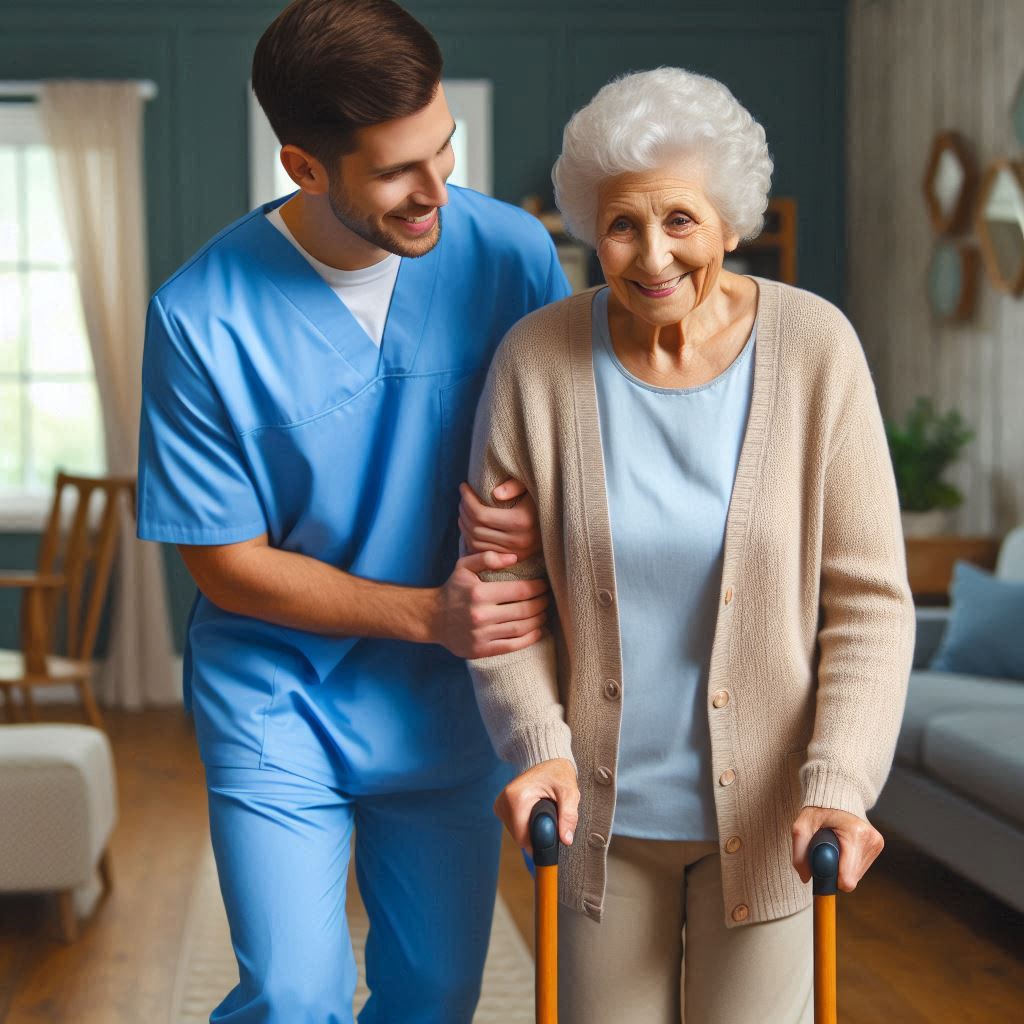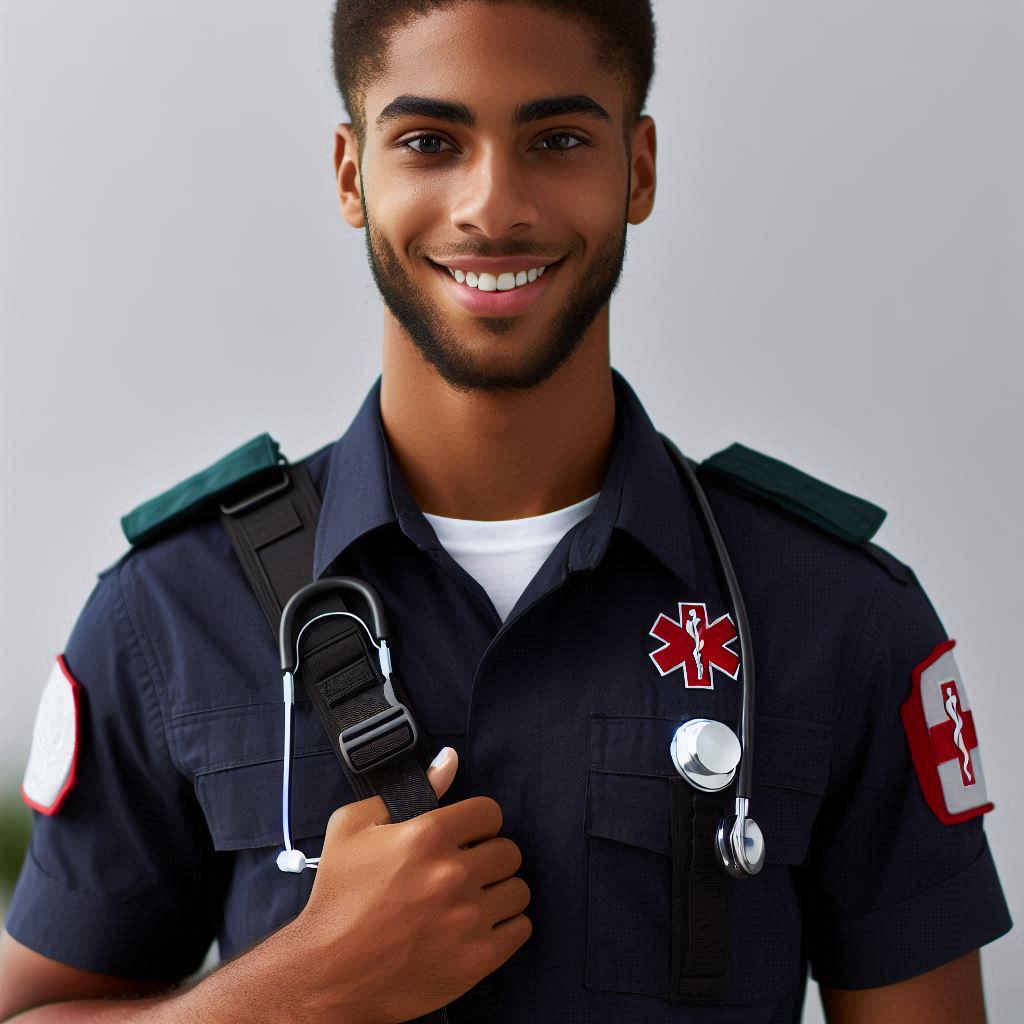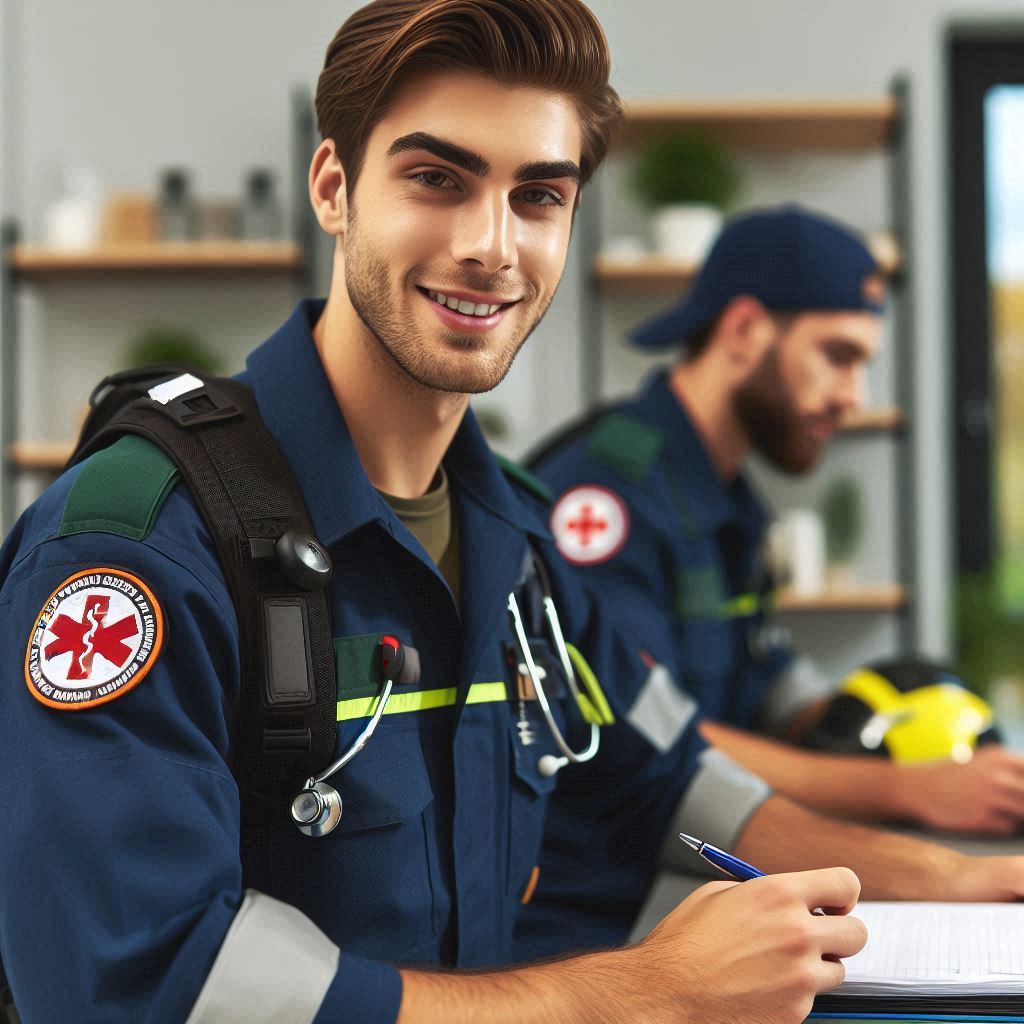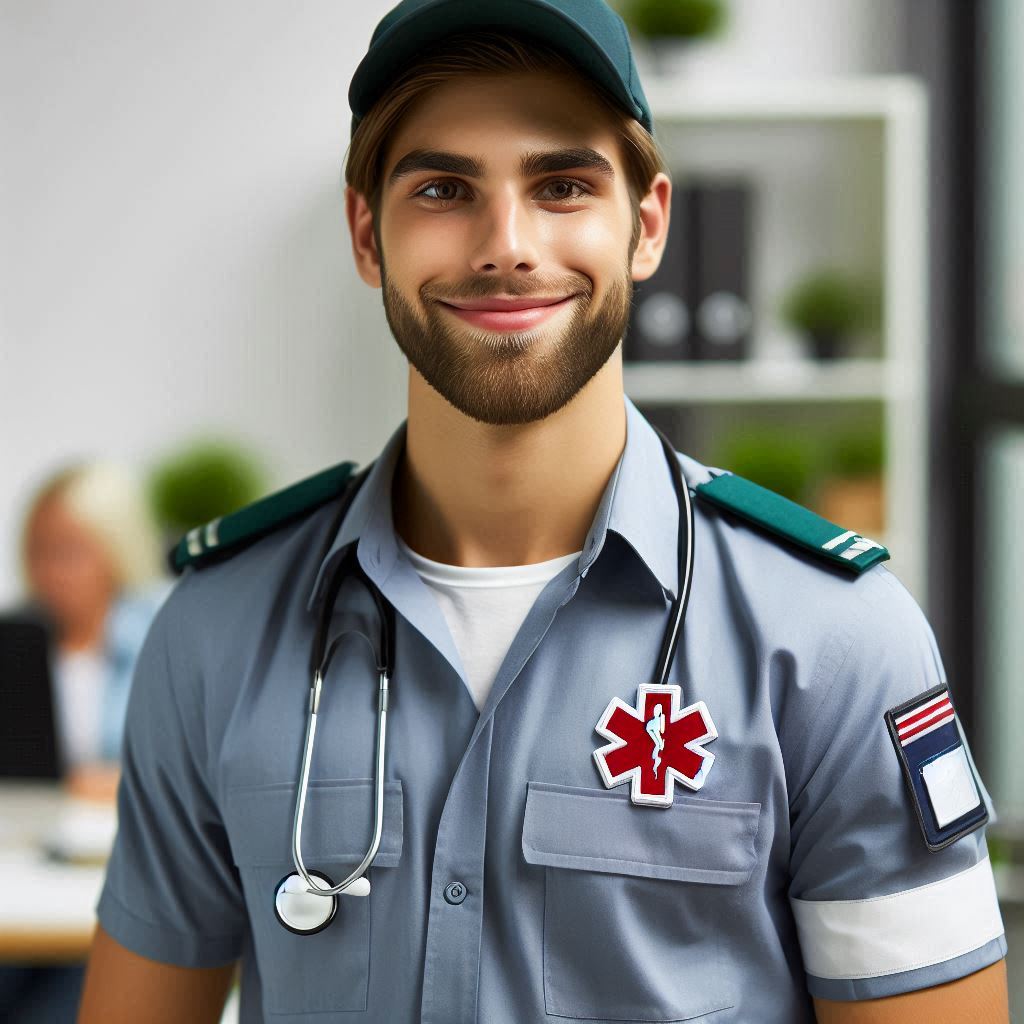Introduction
Safety is crucial for paramedics on the job. Paramedics face numerous risks and challenges daily.
They work in high-stress environments where quick decisions matter. Ensuring safety can prevent injuries and save lives.
Paramedics often respond to emergencies in unpredictable settings. They deal with hazardous materials, violent situations, and traffic accidents.
The job requires physical strength and mental resilience. Lifting patients, handling equipment, and navigating chaotic scenes are routine tasks.
Paramedics also encounter emotional stress, witnessing traumatic events regularly.
Exposure to bloodborne pathogens and contagious diseases is a significant risk. Proper use of personal protective equipment (PPE) is essential.
Continuous training on safety protocols helps mitigate these risks. Team communication and coordination are vital for safety.
Paramedics must stay aware of their surroundings at all times. They need to assess scene safety before providing care.
Quick, calm decision-making under pressure is critical. Fatigue from long shifts can impair judgment and increase risk.
Regular breaks and adequate rest are necessary to maintain alertness. Employers should provide comprehensive safety training and resources.
Paramedics must also advocate for their own safety needs. Following established guidelines and protocols protects both paramedics and patients.
Maintaining physical fitness and mental health supports overall safety. Paramedics should seek support when dealing with job-related stress.
Safety in the field ensures paramedics can continue their lifesaving work effectively.
Reducing risks and addressing challenges proactively enhances job performance. A strong safety culture benefits the entire emergency medical services team.
Prioritizing safety fosters a more resilient and effective workforce.
Understanding the Hazards
Paramedics often encounter hazards such as biological contaminants, violence from patients, and vehicle accidents.
These risks can have a significant impact on the safety and well-being of paramedics while they are on duty.
It is crucial for paramedics to be aware of these hazards in order to prevent accidents and injuries.
Identifying Common Hazards
- Biological hazards include exposure to bloodborne pathogens, infectious diseases, and bodily fluids.
- Violence from patients or bystanders can pose a serious threat to the safety of paramedics.
- Vehicle accidents while responding to emergencies or transporting patients are common risks for paramedics.
Potential Impact of Hazards
- Exposure to biological contaminants can lead to infections or diseases that can affect the health of paramedics.
- Violence can cause physical injuries, trauma, and emotional distress to paramedics.
- Vehicle accidents can result in serious injuries or fatalities for paramedics and patients.
Importance of Awareness
- Being aware of these hazards allows paramedics to take necessary precautions to protect themselves and their colleagues.
- Proper training and education on hazard recognition can help paramedics to respond effectively in challenging situations.
- Regular risk assessments and safety protocols can minimize the risks and ensure the well-being of paramedics on the job.
By understanding the common hazards, identifying potential risks, and emphasizing the importance of awareness, paramedics can enhance their safety and reduce the likelihood of accidents and injuries while on duty.
Read: Preparing Patients for Blood Draws: A Phlebotomist’s Guide
Transform Your Career Today
Unlock a personalized career strategy that drives real results. Get tailored advice and a roadmap designed just for you.
Start NowPersonal Protective Equipment (PPE)
Paramedics face numerous risks and hazards while on duty, making it essential to prioritize their safety by wearing proper Personal Protective Equipment (PPE).
PPE serves as a barrier between paramedics and potentially harmful biological or chemical substances, reducing the risk of infection or injury.
Essential PPE Items
- Gloves: Paramedics should always wear gloves to prevent direct contact with bodily fluids or contaminated surfaces.
- Goggles: Eye protection is crucial to prevent exposure to blood, bodily fluids, or harmful chemicals.
- Face Shields: Shields provide additional protection for the face and eyes, particularly during procedures that may generate splashes or sprays.
- Masks: Respiratory protection is vital to prevent inhalation of airborne pathogens or contaminants.
- Protective Clothing: Paramedics should wear gowns or coveralls to shield their skin and clothing from contamination.
Guidelines for PPE Use
It is important for paramedics to understand when and how to use each type of PPE effectively to maximize protection:
- Gloves: Wear gloves when there is a risk of exposure to blood, bodily fluids, or contaminated surfaces. Change gloves between patients or procedures.
- Goggles: Use goggles during procedures with a risk of splashes or sprays. Ensure a snug fit and clean lenses regularly.
- Face Shields: Wear face shields during tasks that may generate splashes, such as intubation or suctioning. Replace shields if damaged or visibly soiled.
- Masks: Wear masks in situations where airborne pathogens are a concern, such as performing CPR or intubation. Dispose of masks after single-use or if visibly soiled.
- Protective Clothing: Wear gowns or coveralls to protect clothing from contamination. Change garments if visibly soiled or after each patient encounter.
By following these guidelines and wearing the appropriate PPE, paramedics can minimize their exposure to hazards and reduce the risk of illness or injury while carrying out their critical work.
Read: The Role of Technology in Modern Paramedic Work
Safe Lifting and Moving Techniques
Proper lifting and moving techniques are essential for paramedics to prevent musculoskeletal injuries.
Importance of Proper Techniques
- Minimize the risk of back strain and other injuries
- Prevent long-term musculoskeletal issues
- Ensure the safety of both paramedics and patients
Tips for Minimizing Risks
- Bend at the knees, not the waist, when lifting
- Keep the back straight and use leg muscles
- Avoid twisting the body while carrying the patient
- Use assistive devices such as stretchers or lift assists
- Engage in team lifting with other paramedics
Emphasizing Assistive Devices and Teamwork
Utilizing assistive devices like stretchers or lift assists can significantly reduce the strain on a paramedic’s body when moving patients.
Team lifting is also crucial, as it distributes the weight evenly and minimizes the risk of injury to individual paramedics.
By following these safe lifting and moving techniques, paramedics can ensure their own safety while providing the best possible care to their patients.
Read: Phlebotomist Work-Life Balance: Tips and Strategies

Situational Awareness
When it comes to working as a paramedic, one of the most critical skills to develop is situational awareness.
This involves being constantly alert and ready to assess the environment, potential risks, and hazards.
In unpredictable situations, having a keen sense of situational awareness can mean the difference between life and death.
Assessing Potential Risks
- Before entering a scene, paramedics should take a moment to assess the surroundings for any potential dangers.
- Look out for hazardous materials, unstable structures, aggressive individuals, or any other threats that could jeopardize safety.
- Plan an escape route in case the situation escalates and communicate this plan with your team members.
Trusting Instincts
- Paramedics are trained professionals, and their instincts are often honed through experience and training.
- If something feels off or dangerous, trust your instincts and don’t hesitate to communicate concerns with your team.
- Effective communication is key in ensuring everyone is on the same page and can respond appropriately to any potential risks.
By maintaining situational awareness, assessing potential risks, trusting instincts, and communicating effectively with your team, paramedics can enhance their safety on the job and provide better care to those in need.
Remember, safety always comes first in the high-pressure world of emergency medical services.
Read: Paramedic Certifications and Licenses Explained
De-Escalation Techniques
Importance of de-escalating tense situations with patients or bystanders
De-escalating tense situations is vital for paramedics. It ensures patient safety and reduces stress for everyone involved.
Paramedics often face volatile scenarios. De-escalation skills help in managing these effectively.
Remaining calm and composed can prevent situations from escalating. It fosters trust and cooperation from patients and bystanders.
Showcase Your Business Today
Reach thousands of readers actively exploring professional services. Publish your business profile and grow your audience now.
Publish NowTips on how paramedics can defuse conflicts and diffuse potentially dangerous situations
Paramedics can use several techniques to defuse conflicts. First, maintain a calm and steady tone of voice.
Avoid arguing or raising your voice. Show empathy and understanding. Listen actively to the concerns of patients and bystanders.
Keep your body language open and non-threatening. Position yourself at eye level to the person you are addressing.
Examples of verbal and non-verbal communication techniques to maintain a calm and controlled environment
Effective communication is crucial in de-escalation. Use clear and simple language to convey your message.
Avoid technical jargon that may confuse or frustrate. Acknowledge the person’s feelings and show respect.
For non-verbal communication, maintain appropriate eye contact. Use gentle gestures to signal openness and understanding.
Avoid sudden movements that might be perceived as threatening.
Maintain a safe distance to avoid invading personal space. Use a calm and reassuring facial expression.
In general, de-escalation techniques are essential for paramedics. They help manage tense situations and ensure the safety of everyone involved.
By using effective verbal and non-verbal communication, paramedics can defuse conflicts and maintain a controlled environment.
Mental Health and Wellness
The job of a paramedic can take a toll on their mental health due to the stress and trauma they encounter.
Long hours, high-pressure situations, and witnessing traumatic events can lead to PTSD and burnout.
It is essential for paramedics to prioritize their mental well-being to ensure they can continue to provide quality care.
Impact of the Job’s Stress
- The constant exposure to emergency situations can lead to anxiety, depression, and other mental health issues.
- Paramedics may struggle with sleep disturbances, emotional distress, and difficulty processing the trauma they witness.
- Ignoring these signs can result in a decline in job performance and overall well-being.
Strategies for Coping with Stress
- Engage in stress-relieving activities such as exercise, meditation, or hobbies outside of work.
- Connect with colleagues or a mental health professional to discuss the challenges of the job.
- Practice mindfulness and self-care techniques to manage stress and prevent burnout.
Resources for Paramedics
- Many organizations offer mental health resources specifically tailored to first responders.
- Employee assistance programs and peer support groups can provide valuable resources for paramedics in need of help.
- Online resources, such as articles, podcasts, and webinars, can offer additional support and guidance.
Encouraging Self-Care and Seeking Help
- Paramedics should prioritize self-care activities such as exercise, healthy eating, and adequate sleep.
- It is important for paramedics to recognize when they need help and seek support from a mental health professional.
- Creating a supportive work environment where paramedics can openly discuss their mental health is crucial.
Supporting Each Other
- Encouraging colleagues to prioritize their mental health and well-being can create a positive workplace culture.
- Offering support, listening without judgment, and checking in on each other can help prevent burnout and promote resilience.
- Paramedics should not hesitate to seek help or support from their peers when they are struggling with the challenges of the job.
Conclusion
As a paramedic, it is crucial to prioritize your safety while providing emergency medical services. Here are some key safety tips to keep in mind:
- Stay Aware of Your Surroundings: Always be mindful of your environment to avoid potential hazards or dangers that could compromise your safety.
- Proper Lifting Techniques: When lifting patients or equipment, use proper body mechanics to prevent back injuries and strains.
- Use Personal Protective Equipment: Always wear the necessary protective gear such as gloves, masks, and goggles to prevent exposure to bloodborne pathogens.
- Communicate Effectively: Ensure clear communication with your team members and dispatch to coordinate efforts and enhance safety on the scene.
- Maintain a Safe Driving Practice: Adhere to traffic rules, avoid distractions, and drive defensively to reach your destination safely.
[E-Books for Sale]
The Big Book of 500 High-Paying Jobs in America: Unlock Your Earning Potential
$19.99 • 500 High-Paying Jobs • 330 pages
Explore 500 high-paying jobs in America and learn how to boost your career, earn more, and achieve success!
See All 500 High-Paying Jobs of this E-Book
1001 Professions Without a Degree: High-Paying American Jobs You Can Start Now
$19.99 • 1001 Professions Without a Degree • 174 pages
Discover 1001 high-paying jobs without a degree! Unlock career tips, skills, and success strategies for just $19.99!




